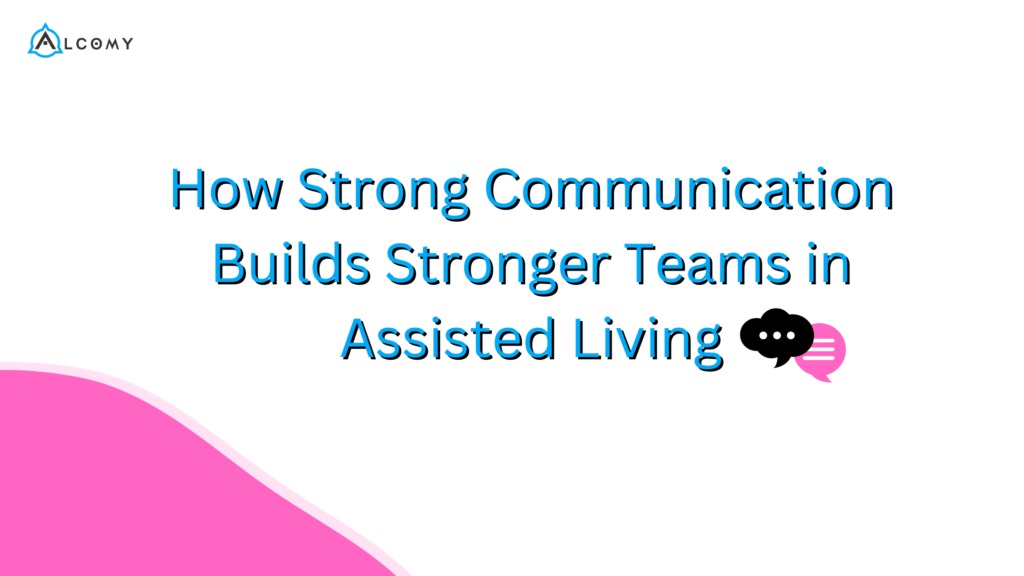Leadership in assisted living starts with clear, consistent feedback. Here’s how community owners and managers can give—and receive—feedback that builds trust, improves care, and strengthens your team.
In assisted living, communication isn’t a soft skill—it’s a survival skill. Between compliance requirements, staffing challenges, and the emotional weight of caregiving, the way leaders communicate with their team can make or break the culture of a community.
When feedback is clear, kind, and consistent, teams feel supported—not micromanaged. And when leaders invite input from their team, they get better insight, stronger engagement, and fewer surprises.
Here’s how successful assisted living owners and managers are creating feedback-friendly environments that keep staff motivated and residents safe.
1. Give Feedback That’s Clear and Compassionate (Radical Candor in Action)
Most managers don’t avoid feedback because they don’t care—they avoid it because they care too much and don’t want to hurt feelings.
But avoiding tough conversations actually does more harm than good. That’s where Radical Candor, a leadership approach by Kim Scott, can help. It teaches leaders to “care personally while challenging directly.”
💬 Example: A team member forgets to log medications
Avoid this:
“You’ve been missing logs—this needs to stop.”
Try this instead:
“I know how committed you are to our residents, and I appreciate the care you show. I’ve noticed the med logs have been missed a few times, which puts our compliance at risk. Can we talk about what’s getting in the way and how to fix it?”
💬 Example: A caregiver handles a family concern beautifully
Avoid this:
“Great job.”
Try this instead:
“When you helped that family feel heard during their visit, you really showed what person-centered care looks like. Thank you—that kind of empathy makes a big difference.”
Radical Candor works because it’s real. Staff know when feedback is sincere, and they appreciate when it’s delivered in a way that helps them grow.
Recommended Resource:
📘 Radical Candor by Kim Scott – a practical guide for anyone managing people in high-pressure environments.
2. Make Feedback a Two-Way Street
It’s not enough to give feedback—you’ve also got to invite it. When staff feel like their voice matters, engagement increases, issues surface earlier, and leadership becomes more effective.
Try asking:
- “Is there anything I could be doing differently to better support you?”
- “What’s one thing that would make your day run smoother?”
Even better: create space for anonymous feedback using a simple Google Form or printed suggestion box.
3. Document and Follow Up on Key Conversations
Verbal feedback is valuable—but it can fade fast in a busy environment. That’s why it helps to follow up in writing, clarify expectations, and create a record of progress.
Use a simple format:
- What happened
- What was discussed
- What’s expected moving forward
- When you’ll check back in
This practice supports consistency, improves accountability, and gives leaders clarity when preparing evaluations or handling repeated issues.
4. Create a Feedback-Friendly Culture
Feedback isn’t a one-time thing—it’s a mindset. When teams know that feedback is welcomed—not feared—they’re more likely to grow together instead of growing apart. Aim to make feedback part of daily conversations and not waiting to give all feedback in a formal sit down conversation.
Make it part of the routine:
- Weekly team huddles with a “wins + opportunities” recap
- Shoutouts during shift changes or team meetings
- Encouraging informal check-ins throughout the week
The more normal and natural feedback becomes, the more comfortable everyone is with using it to grow.
Final Thought
Assisted living teams thrive when leadership leads with clarity. By creating a space where feedback is safe, sincere, and actionable, managers and owners build teams that work better together—and provide even better care.


